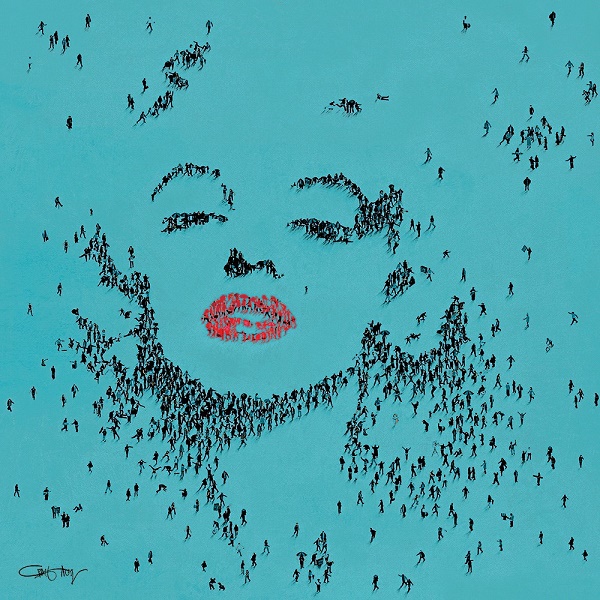

The team of publicity men at 20th Century Fox insisted the photos would ruin her career, but Monroe – wisely – got out in front of the rumors. In 1952 for instance, the discovery of Monroe’s nude Playboy photoshoot threatened to hobble her climb to the top. No matter what came her way, she was canny, ambitious and self-starting: far from the “little girl lost” cliché so often attached to her. Hear Marilyn's response when confronted about a nude photoshoot She worked with a personal makeup artist, Allan “Whitey” Snyder and agreed to a staggering range of promotional gimmicks at the behest of her studio. Monroe understood how to maximize her star potential. She was a very willing participant in the process of her star-making, from her name change to her dye job, her “Jell-O on strings” walk to the perhaps apocryphal story that she put marbles in the tips of her bra for added sex appeal. And the image of Monroe as a peroxide-haired bombshell did not spring forth fully formed. This was not a simple and stratospheric rise, but a series of stop/start events. By the time she hustled her way to the movie backlot – and made it into her first truly noticeable parts in a one-two punch of films in 1950 ( “Asphalt Jungle” and “All About Eve”) – she had done a lot of fine-tuning. 'In walks the most gorgeous young girl': The moment Marilyn was discoveredīorn Norma Jean Mortenson to a single mother who was institutionalized for mental health problems, the girl who came to be known as Marilyn Monroe was raised in a series of foster homes. Even her films – and many of them are truly great, including “Some Like it Hot,” “Gentlemen Prefer Blondes” and “The Misfits” – are sometimes sidelined in favor of the screen goddess image. With all of that baggage, her actual life can sometimes feel blotted out, overpowered by the force of her own star power.

Today, they are also vessels of ideology about feminism, sex, Hollywood and #MeToo. Monroe’s body, face and hair are cultural objects and commercial vehicles. The feeling of kinship we feel with Monroe is, in part, what I suspect has led so many people to find her a source of continuing fascination. While I was being interviewed for the making of this documentary, I at one point found myself unexpectedly wiping tears from my eyes as I spoke about Monroe. She lived a life that was singular and extraordinary, but women continue to identify with her.

She suffered sexual assault and wrote about it, though it fell more or less on deaf ears. Monroe was consistently typecast as vain and stupid for using her looks to her best advantage. But these are only partial truths at best, aided by decades of rumor, mythmaking and assumption about the woman herself. Given her tragic barbiturate overdose in 1962, it’s easy to dismiss Monroe as a victim without the coping mechanisms for success.


 0 kommentar(er)
0 kommentar(er)
